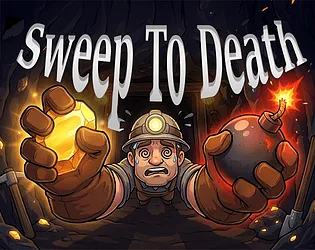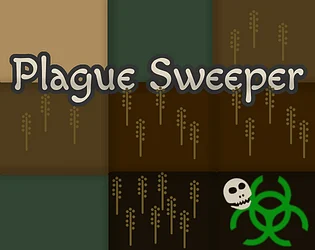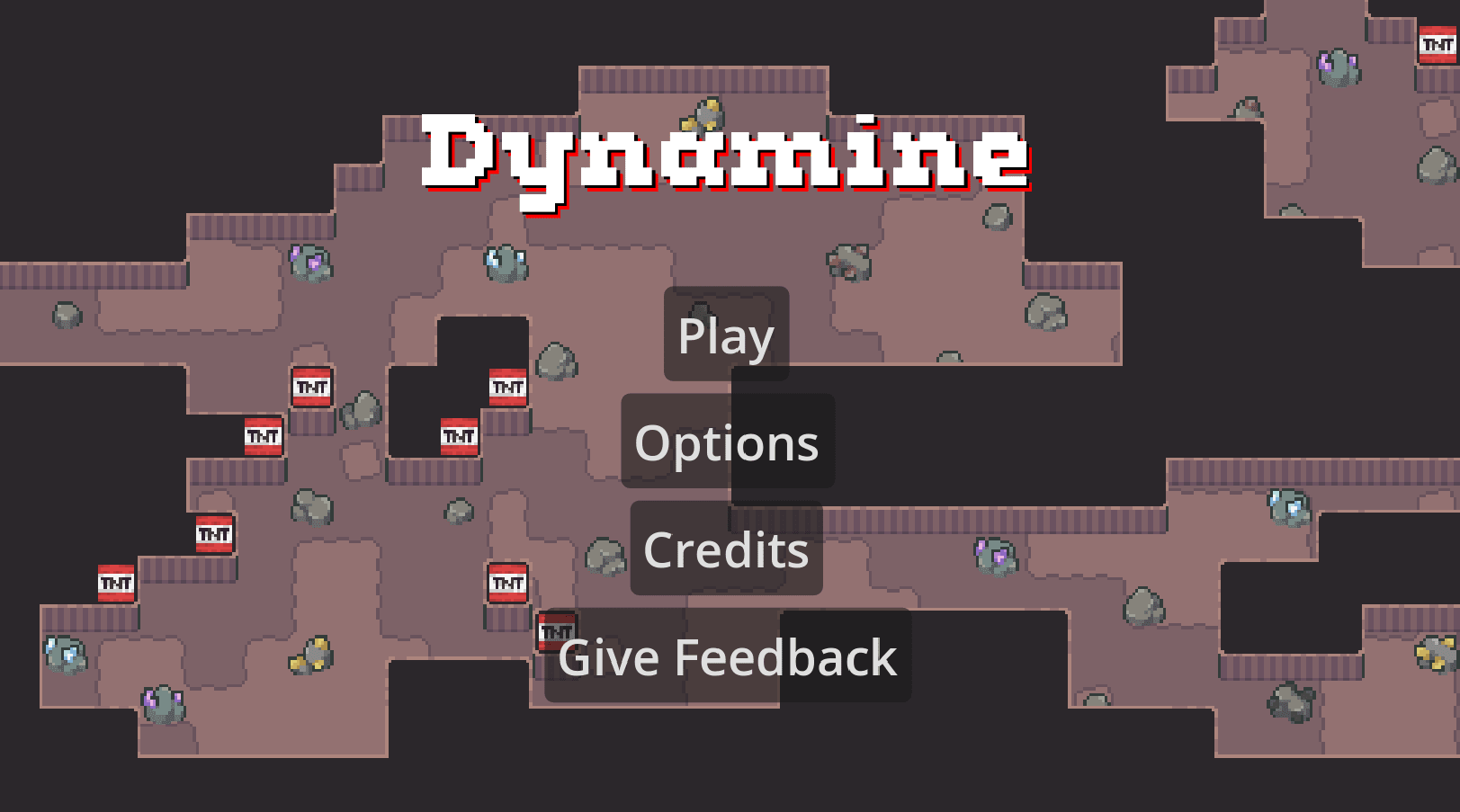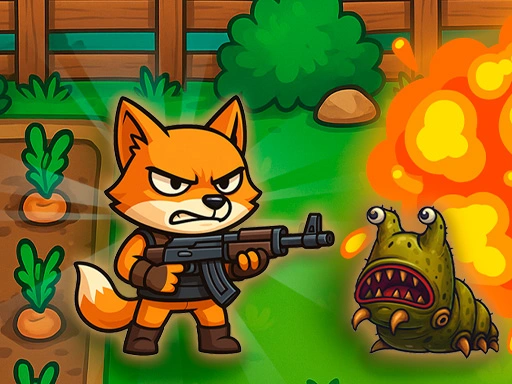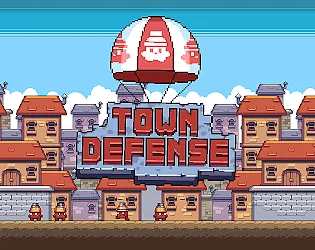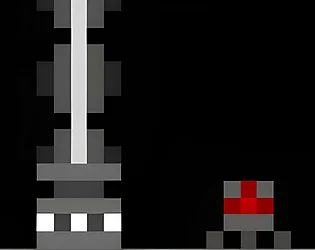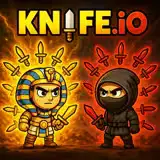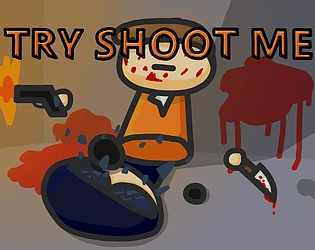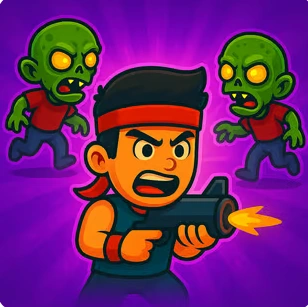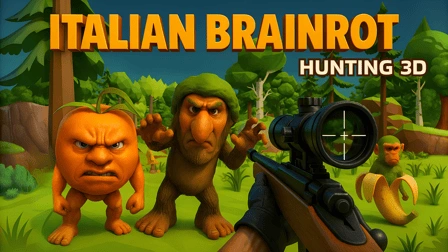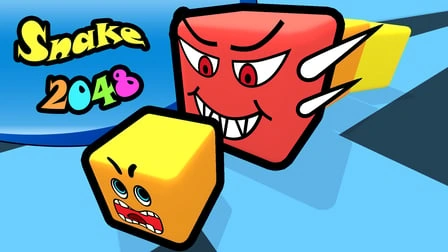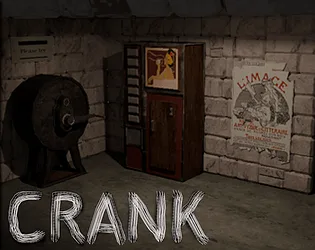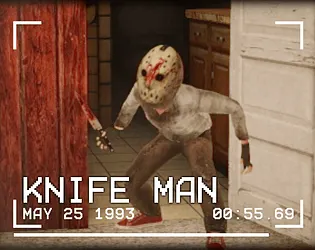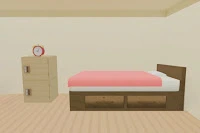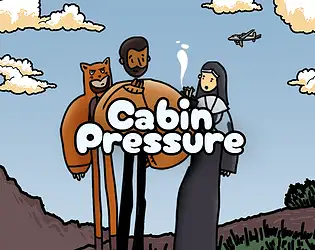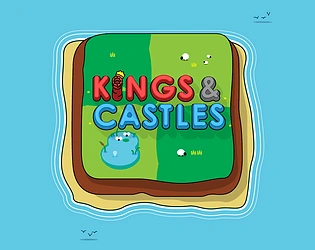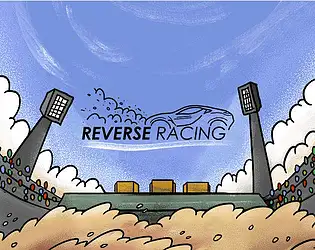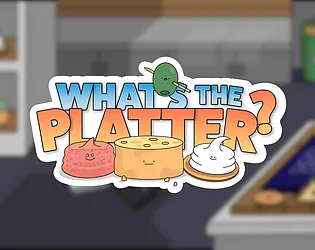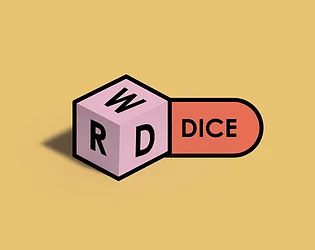
Dwarf Sweeper
Command a dwarf squad through minesweeper-inspired dungeon depths
Dwarf Sweeper
Dwarf Sweeper — Minesweeper Meets Tactical Combat

Dwarf Sweeper brilliantly fuses two classic game concepts: the logical deduction of Minesweeper with the tactical progression of dungeon crawlers. Created during a one-week game jam at Stray Fawn Studio, this roguelike challenges you to command a squad of dwarfs through treacherous mine depths where every tile reveals numbers indicating hidden monster strength. The twist? When you engage a monster, combat is simultaneous—both hero and foe attack at once, creating life-or-death decisions based on mathematical deduction rather than random chance.
🎮 What is Dwarf Sweeper?
Dwarf Sweeper is a roguelike dungeon crawler where classic Minesweeper mechanics determine monster locations and combat outcomes. You assemble a squad of dwarfs, each with unique traits and abilities, then navigate grid-based mine floors filled with hidden monsters. Discovered tiles display numbers showing the total strength of concealed enemies in surrounding tiles—just like Minesweeper shows mine counts, but here those numbers represent enemy health and attack power.
The genius of Dwarf Sweeper lies in its simultaneous combat system. When you click an undiscovered tile and encounter a monster, both combatants attack immediately. Monster strength equals both their health and attack damage. If your dwarf has lower health than the monster's strength, engaging means certain death. Success requires using Minesweeper-style deduction to identify safe tiles, strategic combat to eliminate threats, and careful squad management across three increasingly dangerous floors.
🕹️ Controls
Dwarf Sweeper uses intuitive mouse-based controls for character selection and tile interaction:
| Action | Control |
|---|---|
| Select Character | LEFT CLICK on dwarf portrait |
| Move / Reveal Tile | LEFT CLICK on tile |
| Engage Monster | LEFT CLICK on tile with monster |
| Mark Tile with Number | Press 0-9 keys while hovering over tile |
| Clear Tile Marker | Press X key while hovering over tile |
| Add Notes | Use Pen Tool or number keys to annotate tiles |
The mouse-only design allows smooth tactical gameplay focused on strategic thinking rather than mechanical execution.
🧩 How to Play Dwarf Sweeper
Core Mechanics
Dwarf Sweeper combines deduction and tactical combat across interconnected systems:
- Assemble Your Squad – Select dwarfs with complementary traits and abilities
- Select Active Character – Click a dwarf portrait to control them
- Click Start Tile – Begin your descent into the mines
- Read the Numbers – Each discovered tile shows total strength of hidden monsters in 8 surrounding tiles
- Deduce Monster Locations – Use Minesweeper logic to identify safe vs. dangerous tiles
- Engage Strategically – Only fight monsters when your dwarf's health exceeds their strength
- Gain Experience – Defeating monsters grants XP to the dwarf who lands the killing blow
- Reach Floor 3 Bottom – Complete all three mine floors to win
The Number System
Understanding how Dwarf Sweeper displays information is crucial:
- Tile Numbers – Show combined strength of ALL hidden monsters in adjacent 8 tiles
- Revealed Monsters Excluded – Already discovered monsters don't count toward tile numbers
- Strength = Health + Attack – A monster with strength 5 has 5 HP and deals 5 damage
- Simultaneous Combat – Both hero and monster attack at the exact same moment
- Deduction Required – Use numbers to calculate which tiles hide strong vs. weak enemies
- Zero Tiles – A "0" means all 8 surrounding tiles are safe (no hidden monsters)
Combat System
Dwarf Sweeper combat follows strict mathematical rules:
Combat Mechanics
- Simultaneous Attacks – Hero and monster damage each other at the same time
- Health vs. Strength – Your dwarf must have HP greater than monster strength to survive
- Exact Damage – Monster strength directly equals damage dealt to your dwarf
- Instant Resolution – Combat completes in one exchange; no turn-based rounds
- Death is Permanent – Lost dwarfs cannot be revived during a run
- Experience Rewards – The dwarf who reduces monster strength to 0 gets full XP
Combat Strategy
- Calculate Survival – Only engage when dwarf HP > monster strength
- Weaken First – Multiple dwarfs can damage the same monster before the kill
- Kill Distribution – Spread killing blows across squad members for balanced leveling
- Preserve Strong Dwarfs – Keep high-level heroes healthy for tougher encounters
- Sacrifice When Necessary – Sometimes losing a weak dwarf reveals critical information
Squad Management
Success in Dwarf Sweeper requires effective team coordination:
Dwarf Traits
- Unique Abilities – Each dwarf has distinct traits affecting combat and exploration
- Trait Synergies – Certain combinations create powerful squad compositions
- Specialized Roles – Some dwarfs excel at scouting, others at combat
- Leveling Differences – Higher-level dwarfs gain increased effectiveness
- Permanent Loss – Dead dwarfs force adaptation of strategy mid-run
Tactical Positioning
- Character Selection Matters – Choose which dwarf reveals each tile carefully
- Health Management – Track each dwarf's current HP before engaging monsters
- Risk Distribution – Spread dangerous tile reveals across multiple characters
- Safe Tile Exploration – Use deduced safe tiles to move fragile dwarfs
- Information Gathering – Sometimes revealing a tile with a healthy dwarf is worth the damage
Deduction Techniques
Dwarf Sweeper rewards classic Minesweeper logical thinking:
Basic Patterns
- Simple Counting – If a "3" tile has 2 revealed monsters nearby, 1 strength remains hidden
- Corner Deductions – Tiles with fewer neighbors provide easier calculations
- Zero Chains – Discovering a 0 tile makes all 8 neighbors safe to explore
- Single Possibilities – When only one hidden tile can contain a monster, you've found it
- Elimination Logic – Cross-reference multiple number tiles to narrow possibilities
Advanced Analysis
- Multi-Tile Patterns – Combine information from several numbered tiles
- Probability Assessment – When certainty is impossible, calculate risk levels
- Monster Strength Distribution – Higher numbers might mean many weak monsters or one strong enemy
- Strategic Guessing – Sometimes controlled risks reveal game-changing information
- Mark Annotations – Use number keys to label tiles with deduced monster strengths
Roguelike Progression
Dwarf Sweeper follows roguelike structure with permanent death and random elements:
- Three Mine Floors – Each deeper floor increases difficulty
- Random Monster Placement – Every run features different enemy configurations
- Procedural Challenge – No two games play exactly the same
- Victory Condition – Reach the bottom of Floor 3 to complete the run
- Permadeath – Losing your entire squad ends the run; start fresh
📸 Dwarf Sweeper Strategic Progression

⛏️ Floor 1 - Learning Deduction
Your first Dwarf Sweeper floor introduces the hybrid mechanics gently. Early tiles reveal manageable numbers—2s and 3s showing nearby monster strength. You click a tile, see a weak monster, engage cautiously, and watch your dwarf survive while dealing damage. The Minesweeper deduction feels familiar: this 1 means one weak monster nearby, that 0 means safety in all directions.
These opening moments teach the crucial lesson: you're not playing traditional Minesweeper where any mine kills you instantly. Here, numbers represent manageable threats you can defeat with proper planning. You learn to calculate whether your dwarf's 8 HP can safely engage a monster with strength 5, understanding the simultaneous combat system through careful experimentation.
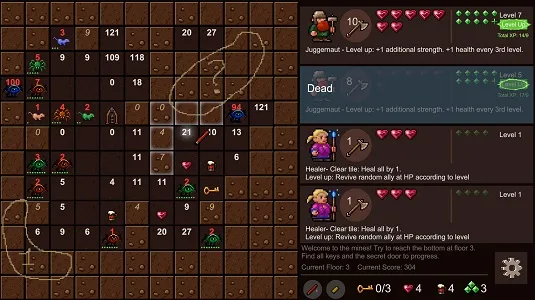
🧠 Floor 2 - Tactical Complexity
Floor 2 of Dwarf Sweeper introduces serious tactical challenges. Now you face tiles showing 8, 10, or higher—indicating either many weak monsters or several strong enemies clustered together. Your squad has taken damage from Floor 1, meaning not all dwarfs can safely engage every encounter. You must deduce not just where monsters hide, but approximate their individual strengths.
This is where squad management becomes essential. You select your healthiest dwarf to reveal a risky tile, discover a strength-6 monster, then pull back and send a different character to finish it off, ensuring the XP goes to a dwarf who needs leveling. Multi-dwarf coordination transforms individual combats into chess-like tactical puzzles.
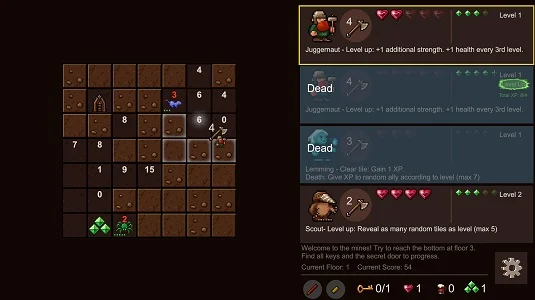
⚔️ Floor 3 - Maximum Pressure
The final floor of Dwarf Sweeper tests everything you've learned. Tiles display frightening numbers—12, 15, 18—suggesting powerful monsters lurking nearby. Your squad is battered from previous floors, with some dwarfs at critical health levels. Every tile reveal carries genuine risk, and poor deduction leads to swift death.
Expert players employ advanced techniques here: using expendable low-health dwarfs to reveal dangerous tiles, carefully annotating suspected monster positions with number markers, and calculating complex multi-tile deduction patterns to identify the safest advancement paths. Victory demands perfect information management and flawless tactical execution.
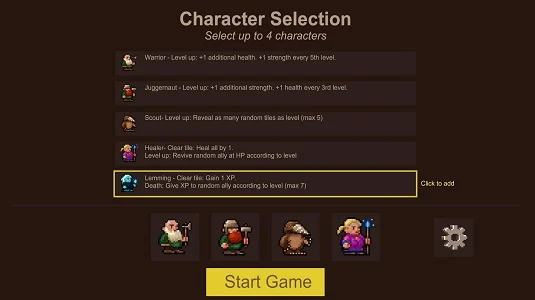
🏆 Victory - Conquering the Depths
Successfully reaching the bottom of Floor 3 in Dwarf Sweeper represents genuine strategic accomplishment. You've navigated countless deduction puzzles, managed squad health across dozens of combats, and made countless life-or-death tactical decisions. The victory feels earned because it required both logical thinking and tactical mastery—neither Minesweeper skills nor combat strategy alone would succeed.
The roguelike structure ensures each victory feels fresh. Different squad compositions, random monster placements, and the permanent consequences of combat deaths create unique challenges every run. Mastering Dwarf Sweeper means developing instincts for risk assessment, pattern recognition, and tactical resource management that carry across all playthroughs.
💡 Tips for Dwarf Sweeper Success
- Calculate Before Clicking - Always verify your dwarf's HP exceeds monster strength before engaging
- Use Number Markers - Press 0-9 keys to annotate tiles with deduced monster strengths
- Distribute Kills - Spread experience across squad members for balanced progression
- Look for Zeros - Tiles showing "0" mean all 8 neighbors are completely safe
- Cross-Reference Numbers - Combine information from multiple tiles for complex deductions
- Sacrifice Strategically - Sometimes losing a wounded dwarf reveals critical information
- Weaken Strong Monsters - Multiple dwarfs can damage a single enemy before the kill
- Track Revealed Monsters - Remember that discovered enemies don't count toward tile numbers
- Corner Analysis - Tiles with fewer neighbors provide simpler deduction puzzles
- Manage Health Pools - Preserve strong dwarfs for floor 3's toughest encounters
Dwarf Sweeper proves that game jam constraints breed innovation. By fusing Minesweeper's logical deduction with roguelike tactical combat, Stray Fawn Studio created a unique experience that respects both puzzle-solving intelligence and strategic thinking. Whether you're carefully deducing monster positions from numbered tiles or coordinating your dwarf squad through simultaneous combat encounters, Dwarf Sweeper delivers satisfying gameplay where victory comes from clever planning rather than luck. Lead your dwarfs wisely. Think three moves ahead. Conquer those mine depths.
Dwarf Sweeper — Minesweeper Meets Tactical Combat

Dwarf Sweeper brilliantly fuses two classic game concepts: the logical deduction of Minesweeper with the tactical progression of dungeon crawlers. Created during a one-week game jam at Stray Fawn Studio, this roguelike challenges you to command a squad of dwarfs through treacherous mine depths where every tile reveals numbers indicating hidden monster strength. The twist? When you engage a monster, combat is simultaneous—both hero and foe attack at once, creating life-or-death decisions based on mathematical deduction rather than random chance.
🎮 What is Dwarf Sweeper?
Dwarf Sweeper is a roguelike dungeon crawler where classic Minesweeper mechanics determine monster locations and combat outcomes. You assemble a squad of dwarfs, each with unique traits and abilities, then navigate grid-based mine floors filled with hidden monsters. Discovered tiles display numbers showing the total strength of concealed enemies in surrounding tiles—just like Minesweeper shows mine counts, but here those numbers represent enemy health and attack power.
The genius of Dwarf Sweeper lies in its simultaneous combat system. When you click an undiscovered tile and encounter a monster, both combatants attack immediately. Monster strength equals both their health and attack damage. If your dwarf has lower health than the monster's strength, engaging means certain death. Success requires using Minesweeper-style deduction to identify safe tiles, strategic combat to eliminate threats, and careful squad management across three increasingly dangerous floors.
🕹️ Controls
Dwarf Sweeper uses intuitive mouse-based controls for character selection and tile interaction:
| Action | Control |
|---|---|
| Select Character | LEFT CLICK on dwarf portrait |
| Move / Reveal Tile | LEFT CLICK on tile |
| Engage Monster | LEFT CLICK on tile with monster |
| Mark Tile with Number | Press 0-9 keys while hovering over tile |
| Clear Tile Marker | Press X key while hovering over tile |
| Add Notes | Use Pen Tool or number keys to annotate tiles |
The mouse-only design allows smooth tactical gameplay focused on strategic thinking rather than mechanical execution.
🧩 How to Play Dwarf Sweeper
Core Mechanics
Dwarf Sweeper combines deduction and tactical combat across interconnected systems:
- Assemble Your Squad – Select dwarfs with complementary traits and abilities
- Select Active Character – Click a dwarf portrait to control them
- Click Start Tile – Begin your descent into the mines
- Read the Numbers – Each discovered tile shows total strength of hidden monsters in 8 surrounding tiles
- Deduce Monster Locations – Use Minesweeper logic to identify safe vs. dangerous tiles
- Engage Strategically – Only fight monsters when your dwarf's health exceeds their strength
- Gain Experience – Defeating monsters grants XP to the dwarf who lands the killing blow
- Reach Floor 3 Bottom – Complete all three mine floors to win
The Number System
Understanding how Dwarf Sweeper displays information is crucial:
- Tile Numbers – Show combined strength of ALL hidden monsters in adjacent 8 tiles
- Revealed Monsters Excluded – Already discovered monsters don't count toward tile numbers
- Strength = Health + Attack – A monster with strength 5 has 5 HP and deals 5 damage
- Simultaneous Combat – Both hero and monster attack at the exact same moment
- Deduction Required – Use numbers to calculate which tiles hide strong vs. weak enemies
- Zero Tiles – A "0" means all 8 surrounding tiles are safe (no hidden monsters)
Combat System
Dwarf Sweeper combat follows strict mathematical rules:
Combat Mechanics
- Simultaneous Attacks – Hero and monster damage each other at the same time
- Health vs. Strength – Your dwarf must have HP greater than monster strength to survive
- Exact Damage – Monster strength directly equals damage dealt to your dwarf
- Instant Resolution – Combat completes in one exchange; no turn-based rounds
- Death is Permanent – Lost dwarfs cannot be revived during a run
- Experience Rewards – The dwarf who reduces monster strength to 0 gets full XP
Combat Strategy
- Calculate Survival – Only engage when dwarf HP > monster strength
- Weaken First – Multiple dwarfs can damage the same monster before the kill
- Kill Distribution – Spread killing blows across squad members for balanced leveling
- Preserve Strong Dwarfs – Keep high-level heroes healthy for tougher encounters
- Sacrifice When Necessary – Sometimes losing a weak dwarf reveals critical information
Squad Management
Success in Dwarf Sweeper requires effective team coordination:
Dwarf Traits
- Unique Abilities – Each dwarf has distinct traits affecting combat and exploration
- Trait Synergies – Certain combinations create powerful squad compositions
- Specialized Roles – Some dwarfs excel at scouting, others at combat
- Leveling Differences – Higher-level dwarfs gain increased effectiveness
- Permanent Loss – Dead dwarfs force adaptation of strategy mid-run
Tactical Positioning
- Character Selection Matters – Choose which dwarf reveals each tile carefully
- Health Management – Track each dwarf's current HP before engaging monsters
- Risk Distribution – Spread dangerous tile reveals across multiple characters
- Safe Tile Exploration – Use deduced safe tiles to move fragile dwarfs
- Information Gathering – Sometimes revealing a tile with a healthy dwarf is worth the damage
Deduction Techniques
Dwarf Sweeper rewards classic Minesweeper logical thinking:
Basic Patterns
- Simple Counting – If a "3" tile has 2 revealed monsters nearby, 1 strength remains hidden
- Corner Deductions – Tiles with fewer neighbors provide easier calculations
- Zero Chains – Discovering a 0 tile makes all 8 neighbors safe to explore
- Single Possibilities – When only one hidden tile can contain a monster, you've found it
- Elimination Logic – Cross-reference multiple number tiles to narrow possibilities
Advanced Analysis
- Multi-Tile Patterns – Combine information from several numbered tiles
- Probability Assessment – When certainty is impossible, calculate risk levels
- Monster Strength Distribution – Higher numbers might mean many weak monsters or one strong enemy
- Strategic Guessing – Sometimes controlled risks reveal game-changing information
- Mark Annotations – Use number keys to label tiles with deduced monster strengths
Roguelike Progression
Dwarf Sweeper follows roguelike structure with permanent death and random elements:
- Three Mine Floors – Each deeper floor increases difficulty
- Random Monster Placement – Every run features different enemy configurations
- Procedural Challenge – No two games play exactly the same
- Victory Condition – Reach the bottom of Floor 3 to complete the run
- Permadeath – Losing your entire squad ends the run; start fresh
📸 Dwarf Sweeper Strategic Progression

⛏️ Floor 1 - Learning Deduction
Your first Dwarf Sweeper floor introduces the hybrid mechanics gently. Early tiles reveal manageable numbers—2s and 3s showing nearby monster strength. You click a tile, see a weak monster, engage cautiously, and watch your dwarf survive while dealing damage. The Minesweeper deduction feels familiar: this 1 means one weak monster nearby, that 0 means safety in all directions.
These opening moments teach the crucial lesson: you're not playing traditional Minesweeper where any mine kills you instantly. Here, numbers represent manageable threats you can defeat with proper planning. You learn to calculate whether your dwarf's 8 HP can safely engage a monster with strength 5, understanding the simultaneous combat system through careful experimentation.

🧠 Floor 2 - Tactical Complexity
Floor 2 of Dwarf Sweeper introduces serious tactical challenges. Now you face tiles showing 8, 10, or higher—indicating either many weak monsters or several strong enemies clustered together. Your squad has taken damage from Floor 1, meaning not all dwarfs can safely engage every encounter. You must deduce not just where monsters hide, but approximate their individual strengths.
This is where squad management becomes essential. You select your healthiest dwarf to reveal a risky tile, discover a strength-6 monster, then pull back and send a different character to finish it off, ensuring the XP goes to a dwarf who needs leveling. Multi-dwarf coordination transforms individual combats into chess-like tactical puzzles.

⚔️ Floor 3 - Maximum Pressure
The final floor of Dwarf Sweeper tests everything you've learned. Tiles display frightening numbers—12, 15, 18—suggesting powerful monsters lurking nearby. Your squad is battered from previous floors, with some dwarfs at critical health levels. Every tile reveal carries genuine risk, and poor deduction leads to swift death.
Expert players employ advanced techniques here: using expendable low-health dwarfs to reveal dangerous tiles, carefully annotating suspected monster positions with number markers, and calculating complex multi-tile deduction patterns to identify the safest advancement paths. Victory demands perfect information management and flawless tactical execution.

🏆 Victory - Conquering the Depths
Successfully reaching the bottom of Floor 3 in Dwarf Sweeper represents genuine strategic accomplishment. You've navigated countless deduction puzzles, managed squad health across dozens of combats, and made countless life-or-death tactical decisions. The victory feels earned because it required both logical thinking and tactical mastery—neither Minesweeper skills nor combat strategy alone would succeed.
The roguelike structure ensures each victory feels fresh. Different squad compositions, random monster placements, and the permanent consequences of combat deaths create unique challenges every run. Mastering Dwarf Sweeper means developing instincts for risk assessment, pattern recognition, and tactical resource management that carry across all playthroughs.
💡 Tips for Dwarf Sweeper Success
- Calculate Before Clicking - Always verify your dwarf's HP exceeds monster strength before engaging
- Use Number Markers - Press 0-9 keys to annotate tiles with deduced monster strengths
- Distribute Kills - Spread experience across squad members for balanced progression
- Look for Zeros - Tiles showing "0" mean all 8 neighbors are completely safe
- Cross-Reference Numbers - Combine information from multiple tiles for complex deductions
- Sacrifice Strategically - Sometimes losing a wounded dwarf reveals critical information
- Weaken Strong Monsters - Multiple dwarfs can damage a single enemy before the kill
- Track Revealed Monsters - Remember that discovered enemies don't count toward tile numbers
- Corner Analysis - Tiles with fewer neighbors provide simpler deduction puzzles
- Manage Health Pools - Preserve strong dwarfs for floor 3's toughest encounters
Dwarf Sweeper proves that game jam constraints breed innovation. By fusing Minesweeper's logical deduction with roguelike tactical combat, Stray Fawn Studio created a unique experience that respects both puzzle-solving intelligence and strategic thinking. Whether you're carefully deducing monster positions from numbered tiles or coordinating your dwarf squad through simultaneous combat encounters, Dwarf Sweeper delivers satisfying gameplay where victory comes from clever planning rather than luck. Lead your dwarfs wisely. Think three moves ahead. Conquer those mine depths.
Release date
Developer
Platform
